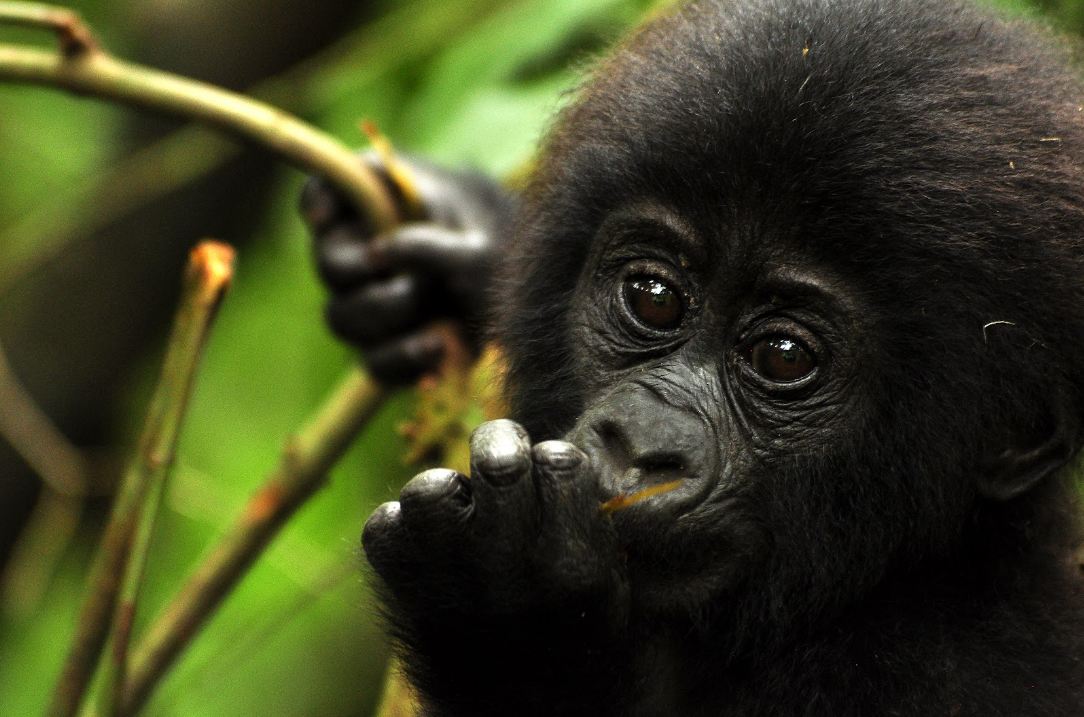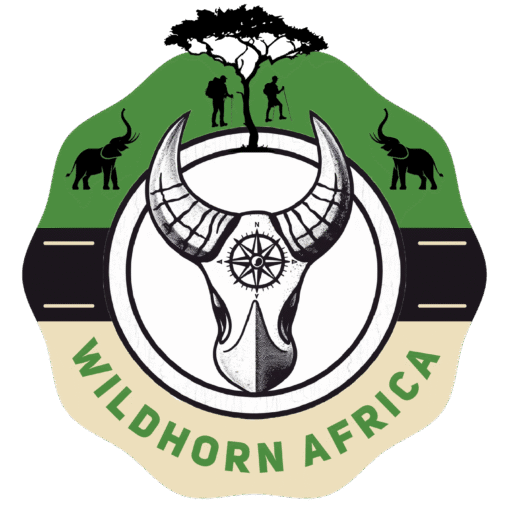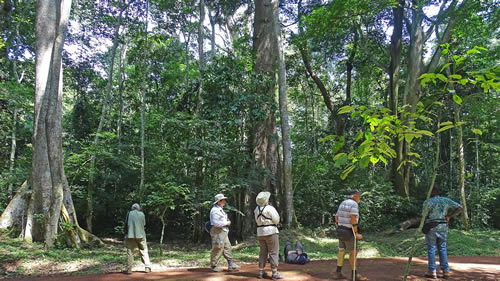Can I Track Gorillas in Uganda and How Does It Work? | Complete 2026 Gorilla Trekking Guide
There are few wildlife encounters on Earth as profound as standing face-to-face with a mountain gorilla in the misty jungles of Uganda. The moment you lock eyes with one of these gentle giants — so intelligent, so powerful, yet astonishingly peaceful — something shifts inside you. This is not merely a wildlife sighting; it is a spiritual awakening, a humbling connection between species separated by millions of years yet bonded by emotion and instinct. Uganda, aptly called the Pearl of Africa, offers the world’s most immersive and authentic gorilla tracking experiences. But for first-time travelers and curious adventurers alike, one question often arises: Can I track gorillas in Uganda, and how does it actually work?
The answer is an emphatic yes — and it is one of the most rewarding experiences any traveler can have. Uganda is home to over half of the world’s remaining mountain gorillas, living in pristine habitats that have remained virtually untouched for centuries. Tracking these magnificent creatures is carefully regulated, ensuring that every visit not only protects the gorillas but also enriches the traveler’s understanding of conservation, wilderness, and humanity’s shared heritage with nature.
This comprehensive guide takes you deep into the heart of Uganda’s gorilla country, exploring how the tracking process works, where it happens, what to expect on the trail, and why this life-changing adventure is worth every step.
Uganda: The Heart of Mountain Gorilla Conservation
To understand gorilla tracking in Uganda, one must first appreciate the country’s unique role in global conservation. The mountain gorilla (Gorilla beringei beringei) is one of the rarest and most endangered primates in the world, found only in two small regions of East-Central Africa — the Virunga volcanic range and the Bwindi Impenetrable Forest. Uganda is blessed to host populations in both of these areas, making it one of the only countries where travelers can witness gorillas in their natural habitat.
Two national parks serve as the sanctuaries for Uganda’s gorillas: Bwindi Impenetrable National Park in the southwest and Mgahinga Gorilla National Park, part of the greater Virunga ecosystem. Together, these parks shelter approximately 500 individual gorillas, representing more than half of the world’s total population. The Ugandan government, through the Uganda Wildlife Authority (UWA), has established rigorous measures to protect these endangered apes and regulate tourism, creating one of the most successful conservation stories in Africa.
Gorilla tracking in Uganda is not a casual activity; it is a deeply structured conservation experience designed to protect the species while offering visitors an unparalleled adventure into the wild. It combines science, respect, patience, and endurance — and the result is an encounter that feels both ancient and intimate.
Where to Track Gorillas in Uganda
The two main destinations for gorilla tracking in Uganda are Bwindi Impenetrable National Park and Mgahinga Gorilla National Park, both located in the mountainous southwestern corner of the country near the borders of Rwanda and the Democratic Republic of Congo. While both parks offer unforgettable experiences, they differ in terrain, accessibility, and atmosphere.
Bwindi Impenetrable National Park: The Crown Jewel of Gorilla Tracking
Spanning more than 320 square kilometers of dense rainforest, Bwindi Impenetrable National Park is a UNESCO World Heritage Site and the epicenter of Uganda’s gorilla tracking experience. The word “impenetrable” perfectly describes the forest’s ancient, tangled vegetation — a lush world of vines, moss-covered trees, and misty ridges that has remained largely unchanged for over 25,000 years.
Bwindi is home to about 20 habituated gorilla families, divided among four main tracking sectors: Buhoma, Ruhija, Rushaga, and Nkuringo. Each sector offers its own distinct terrain, accommodation options, and levels of trekking difficulty. Buhoma, located in the northern part of the park, was the first to open for gorilla tourism in 1993 and remains a favorite for its accessibility and range of lodges. Rushaga and Nkuringo in the south are known for more challenging hikes but equally rewarding encounters, while Ruhija offers breathtaking views and a slightly quieter experience.
Tracking in Bwindi involves navigating steep slopes and thick vegetation, often at altitudes between 1,200 and 2,600 meters. The experience is physically demanding but spiritually enriching. The reward — an hour spent in the company of a gorilla family — makes every drop of sweat worthwhile.
Mgahinga Gorilla National Park: Where Gold Meets Silver
Smaller and more serene, Mgahinga Gorilla National Park lies within the Virunga Mountains, a chain of extinct volcanoes shared by Uganda, Rwanda, and the Congo. Covering only 33.7 square kilometers, Mgahinga may be compact, but it holds extraordinary significance. It is part of the larger Virunga Conservation Area, which also shelters gorillas across the borders.
Mgahinga is home to the Nyakagezi Gorilla Family, famous for its friendliness and tendency to stay within Uganda’s boundaries. The park’s volcanic landscape — with peaks like Mount Sabinyo, Mount Gahinga, and Mount Muhavura — adds dramatic scenery to the tracking experience. In addition to gorillas, visitors may also encounter golden monkeys, another endangered primate species, making Mgahinga the only place in Uganda where both “gold” and “silver” (golden monkeys and mountain gorillas) can be seen in one park.
Tracking in Mgahinga tends to be less strenuous than in Bwindi, thanks to its more open bamboo forests, though the altitude can still make the trek challenging. The experience feels more exclusive due to lower visitor numbers and the breathtaking backdrop of volcanic slopes.
The Gorilla Tracking Process: How It Works
Tracking gorillas in Uganda is a well-coordinated process that ensures both the safety of the gorillas and the satisfaction of the visitors. The experience typically begins early in the morning, following a mandatory briefing by park rangers.
Each group of trackers is assigned to one habituated gorilla family, with a maximum of eight visitors per group to minimize human impact. The treks are led by experienced guides and armed rangers, accompanied by advance trackers who venture ahead of the group to locate the gorillas using signs such as nests, droppings, footprints, and broken vegetation.
Once the gorillas are located, the guides communicate via radio, and the tourists are guided to the site. The duration of the trek varies — it can take anywhere from 30 minutes to 7 hours, depending on the location of the gorillas that day. The forest’s dense vegetation, unpredictable weather, and steep terrain make the experience physically demanding, but every step brings the anticipation of an unforgettable encounter.
Upon finding the gorilla family, visitors are allowed to spend one hour observing them at close range (usually within 7–10 meters). This hour is strictly timed to prevent stress or behavioral disturbance to the gorillas. During this time, trackers can watch the family interact — mothers nurturing infants, juveniles playing, silverbacks asserting dominance, and others grooming or feeding peacefully.
The experience is emotional and humbling. Many visitors describe it as a once-in-a-lifetime moment that changes their perspective on nature and humanity. Photography is permitted, though flash must be turned off, and visitors are expected to maintain quiet respect throughout the encounter.
The Gorilla Habituation Experience: A Deeper Connection
For those who crave a more immersive and extended experience, Uganda offers something unique — the Gorilla Habituation Experience. This activity, available only in the Rushaga sector of Bwindi, allows visitors to spend up to four hours with a semi-habituated gorilla family under the supervision of researchers, trackers, and conservationists.
Unlike standard trekking, where tourists visit fully habituated groups, habituation participants join the scientific team as they follow and observe gorillas still undergoing the gradual process of becoming accustomed to human presence. This process can take years, and travelers become part of this delicate relationship-building phase.
The Gorilla Habituation Experience provides deeper insight into gorilla behavior, communication, and conservation. It is more physically demanding and limited to a few participants each day, but it offers the rare privilege of witnessing conservation in action — a behind-the-scenes look at the work that makes gorilla tourism sustainable.
Permits: The Key to Gorilla Tracking
Gorilla tracking in Uganda is strictly regulated through a permit system to control visitor numbers and protect the gorillas’ welfare. Every visitor must obtain a permit from the Uganda Wildlife Authority (UWA), which grants access to one of the habituated gorilla families for a specific date and sector.
As of 2025, the standard gorilla tracking permit costs USD 800 per person, while the Gorilla Habituation Experience permit costs USD 1,500. These fees may seem high, but they play a crucial role in conservation. A significant portion of the revenue supports anti-poaching patrols, ranger training, community development, and the maintenance of Uganda’s national parks.
Permits are limited and in high demand, especially during the peak travel seasons of June to September and December to February. Travelers are encouraged to book several months in advance through reputable tour operators such as WildHorn Africa, which handle permit procurement, logistics, and itinerary planning.
Physical Preparation and Trekking Conditions
Gorilla tracking is not a casual stroll — it is an active adventure requiring moderate to high fitness levels. The terrain is steep, uneven, and often muddy due to the region’s equatorial rainfall. Hikes can last several hours, and altitudes above 2,000 meters may challenge even experienced hikers.
Proper preparation enhances the experience. Travelers should wear sturdy hiking boots, long trousers, gaiters, and layered clothing suitable for both humidity and sudden rain. Porters are available at the trailhead for hire, offering invaluable assistance by carrying backpacks or helping with difficult ascents. Hiring a porter not only eases the trek but also provides employment for local community members, reinforcing the link between tourism and livelihood.
Though physically demanding, gorilla tracking is achievable for most healthy travelers. The slow pace, frequent breaks, and encouraging support from guides make the trek as much a journey of endurance as of emotion.
The Role of Conservation and Community Involvement
Uganda’s gorilla tourism is globally recognized as a model of sustainable conservation. It is built on the principle that wildlife must bring tangible benefits to local communities to ensure its long-term protection. A portion of every gorilla permit fee is channeled into community development projects such as schools, clinics, clean water initiatives, and small businesses.
In villages around Bwindi and Mgahinga, community tourism initiatives such as the Batwa Cultural Experience, Bwindi Bar hospitality training, and Handicraft cooperatives provide employment and education opportunities. This inclusive model transforms former hunters into conservation ambassadors, demonstrating how tourism can heal relationships between humans and nature.
As a result, Uganda’s gorilla populations have steadily increased over the past three decades, proving that responsible tourism can indeed save species from extinction.
The Emotional Power of a Gorilla Encounter
No amount of reading or footage can prepare one for the emotional intensity of meeting a gorilla face-to-face. When you reach the family after hours of trekking, the forest falls silent. The silverback sits calmly, exuding power yet serenity. Mothers nurse their infants tenderly, and playful juveniles chase each other through the undergrowth.
You realize that these creatures, despite their size and strength, live by values that mirror our own — family, protection, and harmony. Their gestures, expressions, and vocalizations are uncannily familiar, reminding us of our shared evolutionary journey.
It is not just an encounter with wildlife; it is a moment of reflection. Many travelers leave Bwindi or Mgahinga with tears of awe and gratitude, carrying a renewed sense of responsibility for the natural world. It is this emotional resonance that makes gorilla tracking in Uganda not just a safari activity but a life milestone.
Responsible Travel: Protecting What You Encounter
Gorilla tracking comes with rules designed to protect both humans and gorillas. Visitors are required to maintain a safe distance, avoid direct eye contact with silverbacks, and refrain from touching the gorillas. Because gorillas share 98% of human DNA, they are susceptible to human diseases; hence, visitors showing symptoms of illness may be barred from trekking.
Smoking, eating, or leaving waste in the forest is strictly prohibited, and conversation is kept to whispers near the gorillas. These guidelines ensure minimal disturbance and uphold the sacred balance between observer and observed.
Uganda’s strict code of conduct, combined with ranger expertise and community cooperation, ensures that gorilla tourism continues to thrive without compromising animal welfare.
Beyond the Gorillas: Complementary Experiences
While gorilla tracking is undoubtedly the highlight, Uganda’s southwestern region offers numerous complementary experiences that enrich the journey. Travelers can explore the Queen Elizabeth National Park, located nearby, for classic game drives featuring elephants, lions, leopards, and hippos.
The serene Lake Bunyonyi, known for its dotted islands and tranquil waters, offers relaxation after trekking, while Lake Mutanda provides breathtaking views of the Virunga Volcanoes. Cultural encounters with the Batwa pygmy communities offer deeper insights into forest life before conservation policies transformed it.
Combining gorilla tracking with other Ugandan adventures — from chimpanzee tracking in Kibale Forest to boat safaris on the Nile — creates a well-rounded exploration of the country’s extraordinary biodiversity.
Conclusion: The Journey of a Lifetime
Yes, you can track gorillas in Uganda — and doing so will likely stand among the most transformative experiences of your life. The process is structured yet soulful, demanding yet deeply fulfilling. It represents the best of what modern tourism can be: sustainable, educational, emotional, and transformative.
From the misty ridges of Bwindi to the volcanic slopes of Mgahinga, every step through Uganda’s gorilla country is a reminder of humanity’s place within the web of life. It is a journey that changes not only how you see the world but how you feel within it.
For travelers seeking to make this dream a reality, it is best to book their Africa tours and safaris with WildHorn Africa. With expert guides, seamless logistics, and a commitment to conservation and authenticity, WildHorn Africa ensures that every trek is safe, meaningful, and unforgettable. They transform an ordinary adventure into a story of connection — a story between people, nature, and the last wild gorillas of our planet.





 WildHorn Africa – Authentic and unforgettable tours across Africa, guided by local experts who know the land, wildlife, and culture best.
WildHorn Africa – Authentic and unforgettable tours across Africa, guided by local experts who know the land, wildlife, and culture best.


